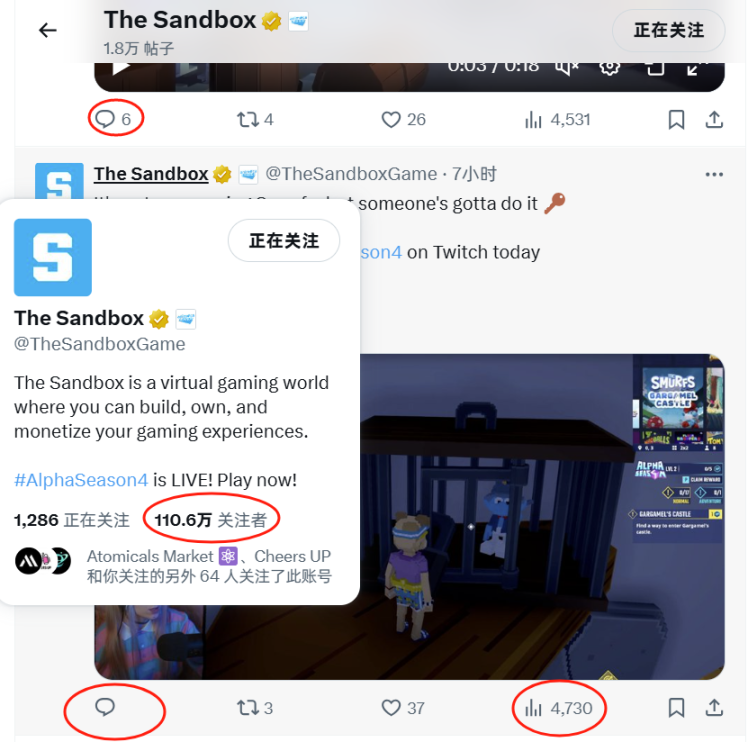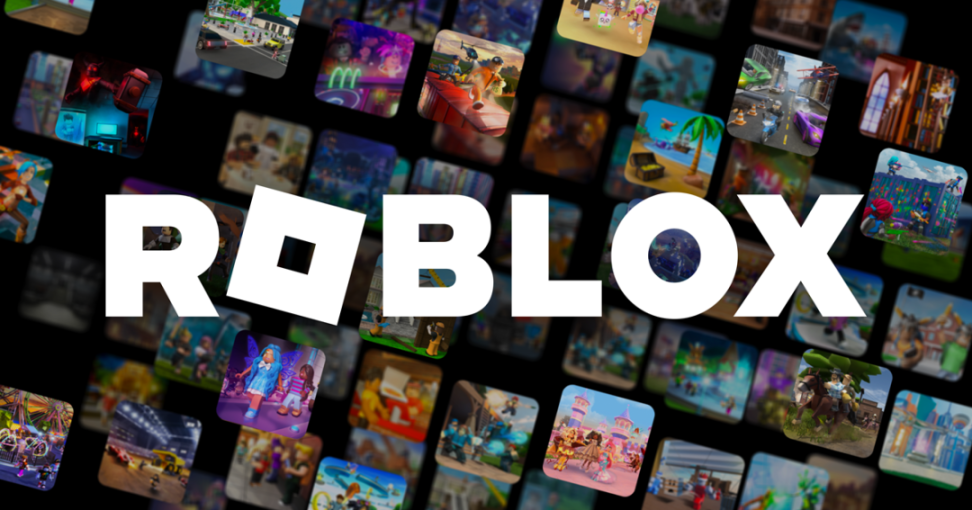What are the bottlenecks in the development of the Metaverse?
Written by: Mu Mu
Recently, Bitcoin has been continuously setting historical highs, just a step away from reaching $100,000, and various sectors in the crypto industry are showing signs of recovery. However, the once-prominent "Metaverse" still appears somewhat desolate at this time, not just in the crypto Metaverse but across the entire tech circle's "Metaverse," which remains silent.
Once hailed as the "next generation of the internet," with tech giants eagerly investing heavily, the Metaverse now seems to be a topic of little discussion, almost "vanishing." What has happened to the Metaverse? Can it make a comeback?
What is the current state of the Metaverse?
Not long ago, Meta's financial report showed that its Q3 Metaverse division is still suffering significant losses. According to public reports, social media giant Facebook fully transformed to go "All in" on the Metaverse and rebranded as Meta in 2021. Its Metaverse division, Reality Labs, was established in 2018, and the large-scale transformation in 2021 increased investments in the Metaverse but also opened up a space for losses, amounting to hundreds of billions of dollars in losses over the past few years.
In a public letter in March 2023, Zuckerberg stated that Meta would focus on company efficiency, streamline projects, and reduce expenses in the RL business while continuing to invest in Metaverse-related businesses and focusing on the integration of AI and the Metaverse. Despite Meta reducing expenses, it still has not managed to turn around its losses.
Although it continues to suffer severe losses, Meta seems to have not given up on the Metaverse track, firmly believing that the Metaverse "is the core that defines the future of social connections," constantly adjusting and optimizing its business lines while continuing to invest and lay out plans.
Turning to the domestic scene, media reports indicate that Alibaba is also optimizing and scaling its Metaverse division "Yuanjing" in response to the cooling trend in the Metaverse field, laying off dozens of employees. This move is said to aim at optimizing the business structure and improving organizational efficiency, with a continued focus on the development of Metaverse applications and tools to provide related services to customers.
In the capital market, the financing amount for Metaverse startups this year is also very low. According to Crunchbase data, this year, companies related to AR, VR, and the Metaverse have raised about $464 million from seed rounds to growth stages. This is the lowest level for the industry in years. It is reported that many Metaverse startups that raised funds in 2021 have not completed another round of financing.
The Metaverse and the Web3 proposed by the crypto community are both referred to as the next generation of the internet. Although there are certain differences, the overlap between the two concepts is quite high. Some say that Crypto and the Metaverse are a match made in heaven, with blockchain being the cornerstone of the Metaverse.

The crypto Metaverse was once highly anticipated as a large-scale application scenario in the crypto industry. However, judging from the low display rates and almost zero interaction of tweets from leading social network accounts in the crypto Metaverse, it appears somewhat sluggish, showing no significant signs of recovery alongside the rise of Bitcoin, and most people seem to have lost interest in this track.

The only exception currently is Roblox, once hailed as the first stock of the Metaverse, whose financial report shows that its revenue and user base are maintaining strong growth. Supported by robust data, even though the Metaverse concept is no longer booming, the company's stock price has risen from a low of $21.6 at the end of 2022 to the current $52, reaching a market value of about $36 billion, which can be considered a good performance.
What problems does the Metaverse face?
It is clear that the Metaverse is in a classic "post-bubble burst valley period" of the tech industry. New technological concepts always go through such a period, as seen with the internet, blockchain, and AI. Of course, every industry in a valley period faces its own problems, and perhaps solving these problems is when the Metaverse will begin to emerge from the valley:
1) Infrastructure and technological bottlenecks
According to the vision of the Metaverse, the ultra-high-quality, immersive experience of interconnected spaces can almost be perfectly realized in a single-player environment. This is reflected in many AAA games. However, these AAA masterpieces are mostly single-player, and connecting these large virtual spaces, often exceeding hundreds of gigabytes, to the internet for simultaneous use by a large number of users is very challenging. One issue is that the internet infrastructure is insufficient (bandwidth and speed), and another is that existing technology cannot support such scenarios.

Taking Meta's Metaverse space as an example, the rough and "abstract" visuals released during Zuckerberg's demonstration were heavily criticized, which does not resemble the Metaverse we envision. In simple terms, the current infrastructure and technology face bottlenecks that cannot simultaneously satisfy high quality and smooth experience.
2) Funds and attention "shifted" to AI
AI is too hot right now, and the limited funds and attention in the market have been attracted to AI, causing the high-investment Metaverse to naturally cool down. Not only that, but AI has also occupied GPU computing resources that the Metaverse urgently needs, similar to how crypto asset mining once occupied and drove up graphics card resources for gamers. These external factors have made innovation and exploration in the Metaverse increasingly difficult.
3) Lack of profitability
Currently, the Metaverse products on the market have not generated much output or profit, aside from early users purchasing some AR and VR hardware out of curiosity. Although Meta firmly believes that the Metaverse is the future, the current internet is more efficient, convenient, and cost-effective. The rough applications of the Metaverse, like those from Meta, have not gained user favor and are not essential, which is a major reason why they have not been profitable.
An industry that continuously loses money can only be sustained by a few giants, while most startup teams can only helplessly abandon their efforts midway.
Will the Metaverse come back?
The value and future of the Metaverse are undoubtedly undeniable, and giants like Meta have not actually stopped investing. Zuckerberg firmly believes that the future will come. So, in what way will it return?
1) Upgraded AAA masterpieces, we are approaching the future of the Metaverse
Recently, the first domestically produced AAA masterpiece, "Black Myth: Wukong," has brought Chinese ancient architecture into virtual space, allowing players to experience the cultural treasures of China in an immersive way, which has received rave reviews from gamers both domestically and internationally.
It is reported that the team behind "Black Myth: Wukong" has utilized the latest AI technology (AI-driven DLSS3) to achieve higher frame rates and better graphics. The AI-powered DLSS represents a revolutionary breakthrough in AI-driven graphics, potentially doubling performance. DLSS 3 can use AI to create more frames and improve image quality. This indicates that the infrastructure and technological bottlenecks of the Metaverse are gradually being broken through.
2) Crypto + Metaverse continues the legend
When the Metaverse was at its peak, people would say that cryptocurrencies like Bitcoin were riding the wave of the Metaverse, just as many tech companies previously tried to capitalize on the blockchain concept and exited the "knockoff CryptoKitties" games. Now that Bitcoin's price has broken through, the crypto Metaverse sector may bring more funds and possibilities. With the continued influx of capital and talent, the original conceptual ideas will gradually revive.
The Metaverse supported by Crypto will be more perfect, and the complementarity between the two is shaping a new virtual economic model. They were once called a match made in heaven, with the main points of integration including the following aspects:
A. Ownership of virtual assets and digital identity
NFTs (non-fungible tokens) are like the "bricks and tiles" that build the Metaverse. In the future, in the open Metaverse space, each user will own their virtual asset data and unique identity, protecting their assets and personal privacy in the virtual world. Through encryption technology, user identities will be managed and verified, ensuring data security, privacy protection, and transaction transparency.
In the leading crypto Metaverse project, The Sandbox, users can freely trade virtual land and items, which are composed of NFTs and protected by blockchain.
B. Decentralized economic systems, incentive mechanisms, and creator economy
Crypto has also brought a complete decentralized economic system to the Metaverse, from token incentives to the creator economy, all validated by the crypto industry. These are crucial for an open and collaborative virtual world. Concepts like P2E (Play-to-Earn) bring real benefits to creators, players, and communities in the virtual world. A well-developed economic system is essential for building a sustainable virtual world.
In the future, with the development of the Metaverse and Crypto, it will also be possible to connect different Metaverse spaces through NFT virtual assets, achieving interconnectivity in the virtual world.
In summary, the Metaverse is like a parallel virtual world, and the native assets in the virtual world are crypto assets. The combination of the Metaverse and Crypto remains highly compatible.
Conclusion
The reason the Metaverse has been overshadowed by AI is not that the Metaverse is not good enough, but that AI is more essential, and its value is more intuitive in an environment with scarce liquidity. In fact, the current major market trend in the crypto space is almost solely focused on Bitcoin and meme-related sectors. Once the overall environment improves and liquidity is sufficient, the Metaverse and many concepts with practical application value should gradually revive. However, in such a capital-intensive track, truly emerging is not easy, and we still need to look forward to the "ChatGPT moment" of the Metaverse.
免责声明:本文章仅代表作者个人观点,不代表本平台的立场和观点。本文章仅供信息分享,不构成对任何人的任何投资建议。用户与作者之间的任何争议,与本平台无关。如网页中刊载的文章或图片涉及侵权,请提供相关的权利证明和身份证明发送邮件到support@aicoin.com,本平台相关工作人员将会进行核查。




